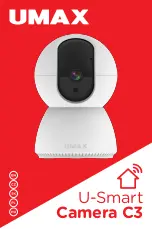
Compliance, safety, and intended use
21
Alvium USB Cameras User Guide V3.1.3
Product safety
To prevent material damage, read the following and understand how to safely
handle and operate the camera. Get helpful details about electrical connections
and learn how to optimize camera performance.
Electrical connections
ESD
ESD is dangerous for electronic devices, especially when tools or hands get in
contact with connectors and electronic components. We recommend measures to
avoid damage by ESD:
•
Unpacking: Remove the camera from its anti-static packaging only when your
body is grounded.
•
Workplace: Use a static-safe workplace with static-dissipative mat and air
ionization.
•
Wrist strap: Wear a static-dissipative wrist strap to ground your body.
•
Clothing: Wear ESD clothing. Keep components away from your body and
clothing. Even if you are wearing a wrist strap, your body is grounded but your
clothes are not.
•
Bare board and open housing cameras: use a special ESD housing.
Cable connections
Provide sufficient strain relief for all cable connections to avoid short circuits and
malfunctions.
PCBAs
Alvium USB cameras enable access to PCBAs. Keep away from camera electronics
to avoid damage.
Camera power
Operating the camera beyond the specified range damages the camera. Cameras
are powered over USB. Alternatively, cameras can be powered using the I/O
connector at a maximum input of 5.5 VDC, using a limited power source (LPS),
according to IEC62368-1: 2014 (Second Edition) with maximum 1.5 A. The camera
is not intended to be connected to a DC distribution network.
•
Make sure that USB 3.0 or 3.1 Gen 1 host controller cards, on-board host
controllers, or hubs provide sufficient current supply for the connected
cameras.
•
We recommend using powered hubs, especially for multi-camera operation.
•
For suitable USB accessories, see the Alvium Cameras Accessory Guide.
















































